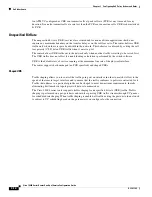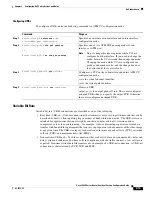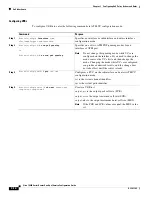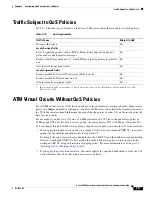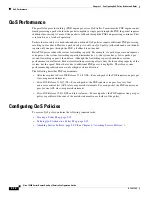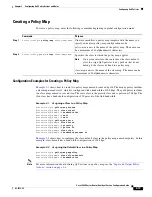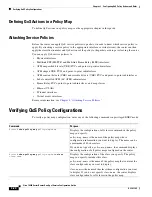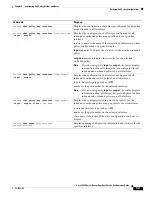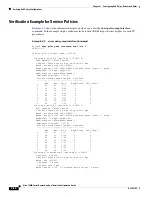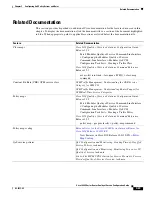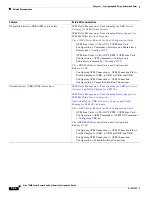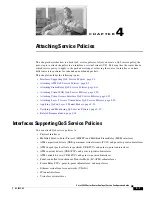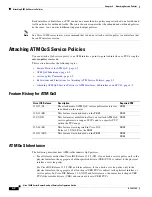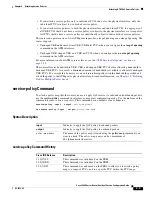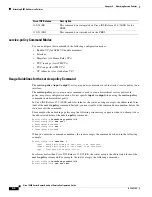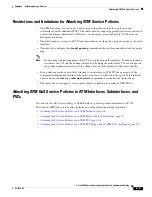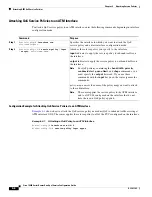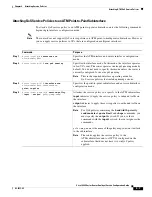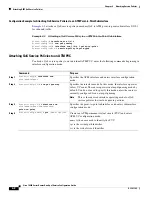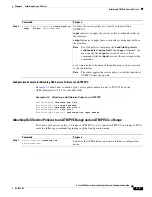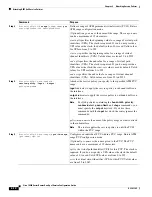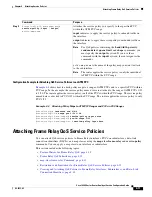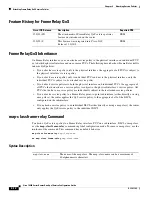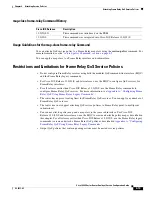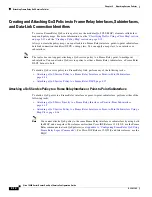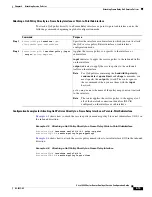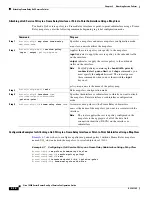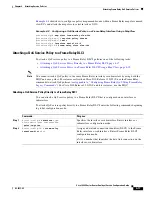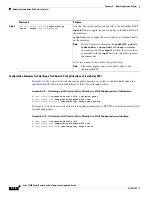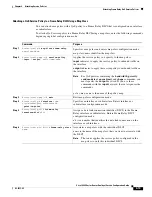
4-4
Cisco 10000 Series Router Quality of Service Configuration Guide
OL-7433-09
Chapter 4 Attaching Service Policies
Attaching ATM QoS Service Policies
service-policy Command Modes
You can configure this command in the following configuration modes:
•
Bundle-VC (for ATM VC bundle members)
•
Interface
•
Map-class (for Frame Relay VCs)
•
PVC-in-range (for ATM VCs)
•
PVC range (for ATM VCs)
•
VC submode (for a standalone VC)
Usage Guidelines for the service-policy Command
The
service-policy
{
input
|
output
}
policy-map-name
command is used to attach a service policy to an
interface.
The
service-policy
policy-map-name
command is used to create hierarchical service policies in
policy-map class configuration mode. Do not specify
input
or
output
when using the
service-policy
command in an hierarchical policy.
In Cisco IOS Release 12.2(33)SB and later releases, the router no longer accepts the abbreviated form
(
ser
) of the
service-policy
command. Instead, you must spell out the command name
service-
before the
router accepts the command.
For example, when attaching a policy map the following error message appears when you attempt to use
the abbreviated form of the
service-policy
command:
Router(config)#
interface gigabit1/1/0
Router(config-if)#
ser out ?
% Unrecognized command
Router(config-if)#
ser ?
% Unrecognized command
When you enter the command as
service-
, the router accepts the command as shown in the following
example:
Router(config-if)#
service- ?
input
Assign policy-map to the input of an interface
output
Assign policy-map to the output of an interface
type
Configure CPL Service Policy
In releases earlier than Cisco IOS Release 12.2(33)SB, the router accepts the abbreviated form of the
service-policy
command. For example, the router accepts the following commands:
Router(config)#
interface gigabit1/1/0
Router(config-if)#
ser out test
12.2(28)SB
This command was integrated in Cisco IOS Release 12.2(28)SB for the
PRE2.
12.2(31)SB2
This command was introduced on the PRE3.
Cisco IOS Release
Description

